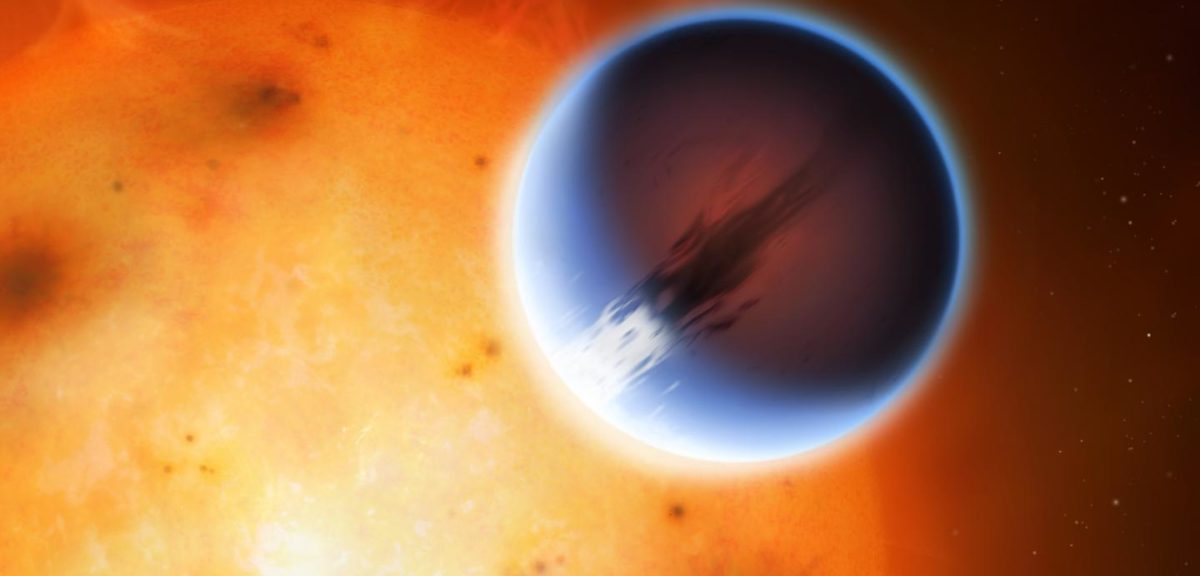
The planet HD 189733b is shown here in front of its parent star. A belt of wind around the equator of the planet travels at At nearly 8,700 kilometers per hour from its day side to the night side. The day side of the planet appears blue due to scattering of light from silicate haze in the atmosphere. The night side of the planet glows a deep red due to its high temperature. (Mark A. Garlick/University of Warwick)
A pair of British scientists have found that winds of over 2 kilometers per second are blowing around HD 189733b, an exoplanet located about 63 light years away from us.
According to the researchers, the exoplanet’s 2 kps wind speed is about seven times the speed of sound and is 20 times more than the fastest wind speed ever known here on Earth.
The researchers, Tom Louden and Peter Wheatley, both of the University of Warwick’s Astrophysics group used data from the High Accuracy Radial Velocity Planet Searcher (HARPS), a high-resolution spectrograph device at the European Southern Observatory’s La Silla 3.6m telescope in Chile.
The information allowed the researchers to gauge and map the planet’s wind speed. They say it’s the first time a weather system of a planet outside of our solar system say the researchers has been measured and mapped directly.

Researchers measured the wind speed flowing around HD 189733b with data gathered by The HARPS high-resolution spectrograph at the European Southern Observatory’s La Silla 3.6m telescope in Chile. (ESO)
“This is the first ever weather map from outside of our solar system. Whilst we have previously known of wind on exoplanets, we have never before been able to directly measure and map a weather system,” said Louden in a University of Warwick press release.
Since HD 189733b is a hot Jupiter-like planet that’s thought to be “tidally locked” with its star. This means that it has a distinctive day side (always facing the star) and a night side (in darkness), the researchers measured wind speeds on both sides of the planet. The duo discovered a strong wind that blew from the planet’s day side to its night side at a speed of about 8,700 kilometers per hour.
Explaining how he and his colleague were able to measure the exoplanet’s wind speed, Louden said that they used high resolution spectroscopy of sodium absorption in the planet’s atmosphere. “As parts of HD 189733b’s atmosphere move towards or away from the Earth the “Doppler effect” changes the wavelength of this feature, which allows the velocity to be measured,” he said.
The researchers continue to fine-tune their exoplanet weather system measurement and mapping techniques, which they say could allow scientists to study wind flows in detail and construct weather maps of smaller planets.
Louden and Wheatley’s research and findings have been outlined in a study published by Astrophysical Journal Letters.























Comments are closed.